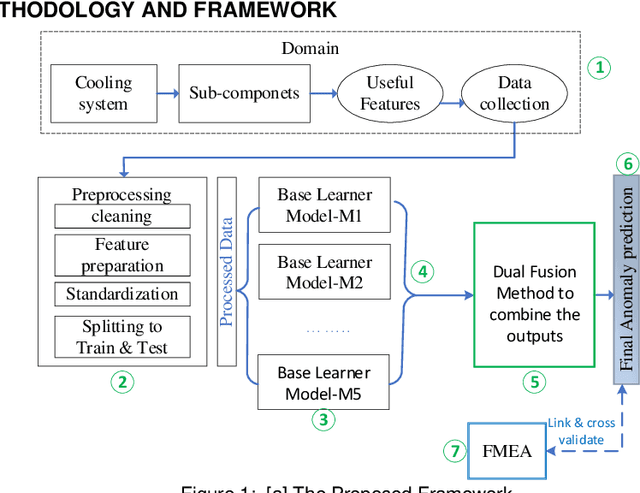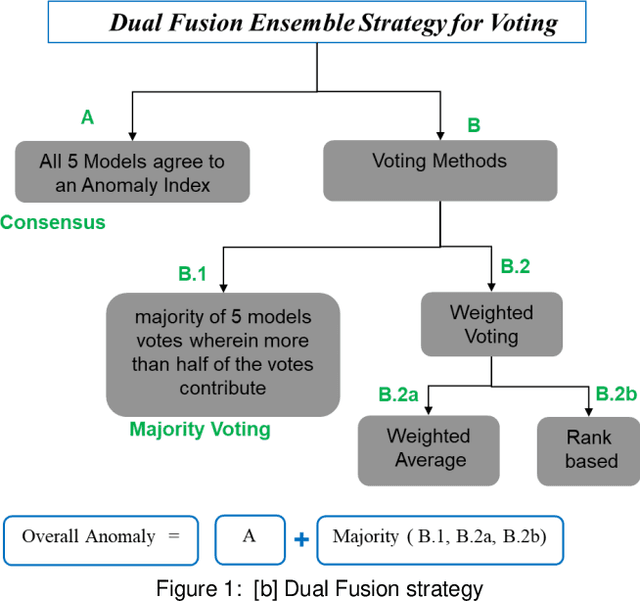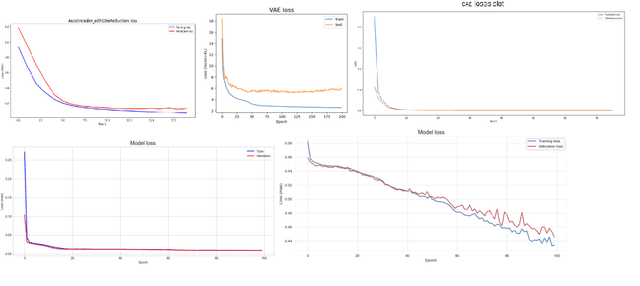Sarala Naidu
S2DEVFMAP: Self-Supervised Learning Framework with Dual Ensemble Voting Fusion for Maximizing Anomaly Prediction in Timeseries
Apr 24, 2024



Abstract:Anomaly detection plays a crucial role in industrial settings, particularly in maintaining the reliability and optimal performance of cooling systems. Traditional anomaly detection methods often face challenges in handling diverse data characteristics and variations in noise levels, resulting in limited effectiveness. And yet traditional anomaly detection often relies on application of single models. This work proposes a novel, robust approach using five heterogeneous independent models combined with a dual ensemble fusion of voting techniques. Diverse models capture various system behaviors, while the fusion strategy maximizes detection effectiveness and minimizes false alarms. Each base autoencoder model learns a unique representation of the data, leveraging their complementary strengths to improve anomaly detection performance. To increase the effectiveness and reliability of final anomaly prediction, dual ensemble technique is applied. This approach outperforms in maximizing the coverage of identifying anomalies. Experimental results on a real-world dataset of industrial cooling system data demonstrate the effectiveness of the proposed approach. This approach can be extended to other industrial applications where anomaly detection is critical for ensuring system reliability and preventing potential malfunctions.
ABCD: Trust enhanced Attention based Convolutional Autoencoder for Risk Assessment
Apr 24, 2024Abstract:Anomaly detection in industrial systems is crucial for preventing equipment failures, ensuring risk identification, and maintaining overall system efficiency. Traditional monitoring methods often rely on fixed thresholds and empirical rules, which may not be sensitive enough to detect subtle changes in system health and predict impending failures. To address this limitation, this paper proposes, a novel Attention-based convolutional autoencoder (ABCD) for risk detection and map the risk value derive to the maintenance planning. ABCD learns the normal behavior of conductivity from historical data of a real-world industrial cooling system and reconstructs the input data, identifying anomalies that deviate from the expected patterns. The framework also employs calibration techniques to ensure the reliability of its predictions. Evaluation results demonstrate that with the attention mechanism in ABCD a 57.4% increase in performance and a reduction of false alarms by 9.37% is seen compared to without attention. The approach can effectively detect risks, the risk priority rank mapped to maintenance, providing valuable insights for cooling system designers and service personnel. Calibration error of 0.03% indicates that the model is well-calibrated and enhances model's trustworthiness, enabling informed decisions about maintenance strategies
 Add to Chrome
Add to Chrome Add to Firefox
Add to Firefox Add to Edge
Add to Edge